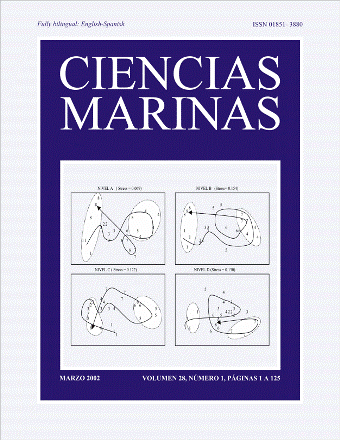Cu and Zn accumulation by calcium alginate immobilized marine microalgal cells of Nannochloropsis gaditana (Eustigmatophyceae)
Main Article Content
Abstract
Different experiments about the accumulation capacity for copper and zinc were carried out on the marine microalgae Nannochloropsis gaditana Lubián (Eustigmatophyceae). A 24-hour study of the evolution of accumulated metal in the beads revealed two possible accumulation phases. Accumulation differences between free and immobilized microalgal cells were investigated finding no differences for copper, and little differences for zinc. Free cells accumulated practically 100% Cu or Zn in the media under experimental conditions. Experiments in order to compare the accumulation capacity of living vs. dead cells were designed too, obtaining the largest accumulation levels for both metals in the beads containing immobilized living microalgae. In experiments carried out in continuous-flow reactors, beads with entrapped cells showed to be more efficient removing Cu and Zn than beads without cells. In all the experiments, the calcium alginate beads showed strong affinity for Cu. Similar results were obtained when accumulation by packed beads in columns was tested, but efficacy was higher if this design was used (beads with cells retain 80% of Cu introduced in the column).
Downloads
Article Details
This is an open access article distributed under a Creative Commons Attribution 4.0 License, which allows you to share and adapt the work, as long as you give appropriate credit to the original author(s) and the source, provide a link to the Creative Commons license, and indicate if changes were made. Figures, tables and other elements in the article are included in the article’s CC BY 4.0 license, unless otherwise indicated. The journal title is protected by copyrights and not subject to this license. Full license deed can be viewed here.

